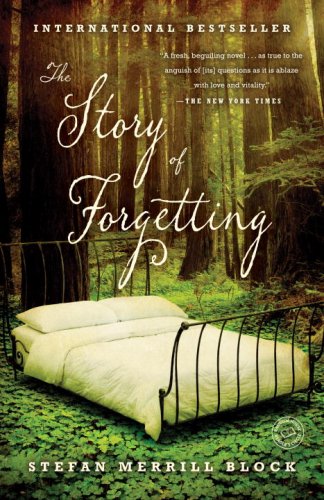All Nonfiction
- Bullying
- Books
- Academic
- Author Interviews
- Celebrity interviews
- College Articles
- College Essays
- Educator of the Year
- Heroes
- Interviews
- Memoir
- Personal Experience
- Sports
- Travel & Culture
All Opinions
- Bullying
- Current Events / Politics
- Discrimination
- Drugs / Alcohol / Smoking
- Entertainment / Celebrities
- Environment
- Love / Relationships
- Movies / Music / TV
- Pop Culture / Trends
- School / College
- Social Issues / Civics
- Spirituality / Religion
- Sports / Hobbies
All Hot Topics
- Bullying
- Community Service
- Environment
- Health
- Letters to the Editor
- Pride & Prejudice
- What Matters
- Back
Summer Guide
- Program Links
- Program Reviews
- Back
College Guide
- College Links
- College Reviews
- College Essays
- College Articles
- Back
The Story of Forgetting by Stefan Merrill Block
The Story of Forgetting: Book Review
In the eyes of most Americans, forgetting is associated primarily with a lack of organization or a simple slip of the mind- forgetting to pick up the dry cleaning, for instance, or perhaps forgetting to watch that television show. It is quite rare to find forgetting associated with the circumstances of life. In Stefan Merrill Block’s The Story of Forgetting, forgetting is given this meaning as it is portrayed as a goal and soon an obsession for his characters.
The Story of Forgetting is Stefan Merrill Block’s very first novel and he has won much acclaim. Readers have taken notice to his detailed character development and plot structure and have thus become recognized as a notable young modern author. Block grew up in Plano, TX. The book itself is set in Dallas and Austin, Texas, so many of the places that Block refers to in the novel are real places in these areas.
In the novel, Block uses two separate narrators who narrate in alternating chapters. The relation between the two is initially unclear. This ambiguity is initially intended as Block wants the reader to question their relation. This idea is exceedingly efficient in keeping the reader curious, making them more inclined to further reading the novel. Block is also very good at developing his characters. He provides insight into his character’s mind so that the reader can identify with their personality and emotions. His diction is appropriate for the characters as he uses mainstream vocabulary rather than elevated to further his development of Seth and Abel as regular, everyday people- this allows the reader to relate.
Block is a fairly new author as The Story of Forgetting is his first novel. Therefore, it becomes clearer to the reader why he would attempt to create stylistic elements, the major one being having two narrators with alternating chapters. This is not a common theme found in most books (they generally follow a one narrator chronological order), but as Block is just beginning to develop a name in the literary world as well as his own style, he uses unconventional methods to describe the plot. Although this may seem like a good idea (often times rare elements of style are found attractive to an audience), it is only viewed as such if the author executes it in a manner of precision and accuracy. Keeping the reader captivated eventually becomes difficult as Block becomes sloppy in his chapter endings. In most novels, chapter endings are the key in keeping a reader captivated; authors often spend hours coming up with cliff-hangers that make a novel impossible to put down. Although Block does this initially, as the novel continues, the reader finds him or herself feeling annoyed as one narrators story has been crudely cut off simply to maintain the theme of alternating chapters.
Seth and Abel, the two narrators, are both afflicted by Alzheimer’s. They both find themselves in a situation where forgetting is the only way to deal with the circumstance. Seth devotes himself to becoming the “Master of Nothingness”- he simply wants to be left alone from the cruel world. Abel as well finds himself wishing that he did not have to deal with the jealousy that he has for his brother.
Overall, the idea behind the book and the plot itself was extremely captivating and well-done. The execution of the alternating chapters, however, was not as proficient as I would have liked. Block has used his imagination to the fullest in this page-turning novel and I would recommend it to anyone interested in seeing a situation from another’s point of view.
Similar Articles
JOIN THE DISCUSSION
This article has 0 comments.

